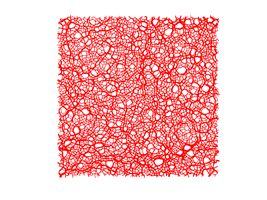Science Spotlight: The Behaviour of Sand with Peter Adesina, Geotechnics
Peter Adesina investigates how the shape, size and distribution of sand particles on a microscopic scale affect behaviour and material properties on a much larger (macro)scale

Peter Adesina is a final-year PhD student in the Geotechnics research group in the Department of Civil Engineering. He investigates how the shape, size and distribution of sand particles on a microscopic scale affect behaviour and material properties on a much larger (macro)scale. At present, our understanding of soil behaviour is largely derived from experiment and observation, rather than fundamental analysis.
Soils play an important role in construction; buildings, roads and dams are erected on soils and many structures are built using different soils. Sand is one of the critical components of concrete, the second most-consumed resource on the planet behind water. As we move towards a sustainable future, finite resources such as sand will need to be used more judiciously and efficiently.
When viewed from this perspective, Mr Adesina’s work is critical. Speaking to Felix, he said, “A fundamental understanding of the factors influencing soil behaviour will help us optimise soil properties. This will allow us maximise the potential of soils, so that we will be able to reduce waste.” Aside from improving sustainability, more efficient use of soils will reduce the cost of construction, allowing for more affordable infrastructure and housing, in areas of the world where material costs are high. Furthermore, it will allow engineers to design more resilient structures, using the newfound understanding of soil behaviour.
“The aim of our research is to develop a fundamental understanding of the factors responsible for the mechanical behaviour of sand. In particular, we seek to understand the role played by particle shape, particle size distribution and relative density on the packing and strength of sand. For this purpose, we generate numerical sand samples to various configurations (Figure 1), we then simulate their behaviour under loading using discrete element modelling (DEM). DEM is a numerical approach that allows for a microscale examination of sand towards an effective understanding of macroscale behaviour. We hope a detailed analysis of the fabric quantities such as particle orientation (Figure 2) and contact force network (Figure 3) will unravel the fundamental behaviour of sand.”











